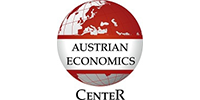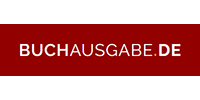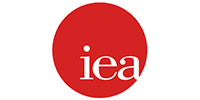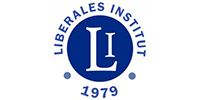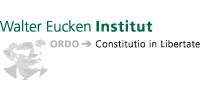The myths of central bank independence
Over the past two decades, many developments have raised questions about the role of central banks and how vulnerable they are to political pressure. It is also worth asking to what extent central bankers can influence politics, and whether such a state of affairs is desirable. In a world where national financial institutions act in concert with political actors, economic outcomes are the result of political choices like regulation, taxation and public expenditure. Conversely, monetary instruments may be deployed by central bankers to temper or reverse government policies.
Economic literature has long stressed the value of central bank “independence.” Yet because these monetary policymakers are appointed by elected political authorities, true independence is impossible. In practice, what is called independence rests on three features that bear little relation to the term itself.
The first aspect concerns the central bank’s freedom – and obligation – to pursue the objectives of monetary policy as defined by its founding statutes, which are themselves products of political decisions. For instance, the United States Federal Reserve’s current mandate was set by the Congress in 1977, while the European Central Bank’s (ECB) objectives were codified by European prime ministers into the 2009 Treaty of Lisbon. In this sense, independence simply means that central bankers are free to pursue their legally defined goals, even if these differ from the preferences of sitting politicians.
The second feature concerns what central bankers are prohibited from doing. They are barred from direct interaction with governments or private entities that could expose them to external influence. For example, the Federal Reserve may not lend to or borrow from companies and individuals, nor rely on taxpayers’ money to fund its operations. Similarly, the ECB is forbidden from providing financial services to private actors or directly financing the public debts of European Union member states.
Facts & figures: Interest rates in the U.S. and the eurozone
The third feature is the absence of meaningful sanctions when central bankers breach their statutes, whether by undertaking unauthorized actions or by failing to meet their mandates. In this sense, independence effectively translates into unaccountability.
Independence or freedom from consequences
The terms “dependence” or independence are at least partially misleading. For example, a “dependent” central bank can be forced to buy treasuries, but then sell them on the market soon afterwards and therefore sterilize its obligation to finance public debt. Likewise, an “independent” central bank can come to the rescue of governments by buying treasuries on the secondary market. In other words, today’s central bankers enjoy plenty of freedom and can also circumvent their own statutes.
The real issue is that monetary policymakers operate with virtually no accountability. The constraints established by their statutes have proven to be porous in the past. For example, the ECB has bought treasury bills on the secondary markets. These loopholes will likely remain in place, or perhaps even expand. Digital currencies will likely blur or replace many of the boundaries that currently restrict central banks.
Viewing these institutions through the lens of unaccountability rather than independence offers a new way to understand their role and sheds light on possible future developments. In today’s societies, political bodies are sovereign entities with the power to enforce their actions and prevent other agents from offering alternatives. In most democracies, decision-making is often a long and complex process that goes through committees, political parties, the executive and the legislature.
To reduce the risk of stalemate and ensure timely moves, politicians create ad hoc agencies that operate in autonomy. The central bank is one such agency. It is almost entirely autonomous as it is not accountable to any of the traditional branches of government: legislative, executive or judiciary. When it comes to monetary policy, a central banker has the law-making power of a politician yet is not answerable to an electorate. Central banks rival the legislative or the executive in certain areas of economic policymaking. Not surprisingly, tensions arise, as shown by the recent strain between the Fed and the executive in the U.S.
Should one welcome competition between these two political entities – elected governments and unaccountable central bankers – or rather worry about the presence of an additional source of conflict and uncertainty?
Free-market advocates are wary of creating multiple centers of economic decision-making. Their concern is that as the number of policymaking authorities grows and accountability declines, so do the risks to individual liberty, private property and the integrity of market signals such as prices and interest rates.
By contrast, others argue that fiat money and active monetary policy are essential to a modern economy. Central bankers, they claim, safeguard these domains from populist interference, while the existing framework of statutes and appointments helps align their decisions with the broader priorities of legislators and the executive.
Ultimately, both perspectives rest on the premise of collaboration rather than competition between monetary and political authorities. This shifts the focus from operational mechanics to institutional necessity: If proactive monetary policy, and thus a fiat-currency regime, is deemed essential, central banking and its accompanying interdependence follow by definition. Regulatory oversight, while popular, could in principle exist without a central bank.
Scenarios
Possible: Conflict dominates
When governments change, so do visions about policymaking in general and monetary policy in particular. Conflicts between elected and appointed agencies may become more frequent. In this light, the current tension between President Donald Trump and the Fed is not an exception but rather a sign of what to expect in the future.
In this scenario, two outcomes are possible. If the legislature prevails, the terms of central bankers will mirror the political cycles of those who appointed them, turning central banks into extensions of government ministries. If the technocrats prevail, monetary policy is likely to become erratic and unpredictable.
Highly likely: Collusion continues
A second and far more likely scenario is one in which collusion continues to define the relationship between governments and central banks. Differences between the two may arise, but they usually concern the timing of monetary action rather than its direction or scale. After all, a central banker is, by nature, a central planner: fond of regulation, paper money and active intervention, yet fearful of losing prestige when bankruptcies occur, households suffer losses or inflation is deemed “too high.”
The recent Trump-Powell dispute should not obscure the reality that since January, U.S. money supply (M2) has been expanding by roughly 0.4 percent per month, while the real yield on three-year Treasury notes remains at only about 0.6 percent. In this setting, it is public opinion and political parties that determine what counts as too high, and the central banker merely endorses it. For instance, Fed Chairman Jerome Powell appears to share the Trump administration’s view that inflation of around 3 percent is acceptable, although one might question whether President Trump truly regards a real interest rate below 1 percent as excessive.
Highly unlikely: Central banks refuse to manipulate the economy
A third and most unlikely scenario is one in which the central bank opts to fight the government head on. Banks would do so by explicitly and openly criticizing governmental policies, and refusing to monetize or finance public debts, much like Chairman Powell over the past two years. They would engage in restrictive monetary policy in an attempt to make it prohibitively expensive to pursue debt-financed public spending.
It would certainly be good news to have central bankers who refuse to manipulate the economy and urge politicians to do the same. Yet why should technocrats who have long been hand-in-glove with political power and high finance suddenly change their views or their allies after appointment? Chairman Powell may have shifted his stance over the past two years, but his allegiances are likely unchanged.
This report was originally published here: https://www.gisreportsonline.com/r/central-bank-independence/






